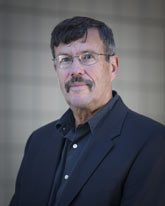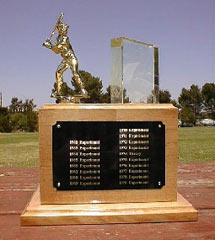

Friday - September 24, 2010
SLAC Today is
available online at:
http://today.slac.stanford.edu
In this issue:
From the Acting Director of the Accelerator Directorate: X-band Accelerator Technology—Where It Could Be Going
Fame! Glory! The SLAC Annual Softball Game Wants You!
 |
 |
|
Friday - September 24, 2010 |
From the Acting Director of the Accelerator Directorate: X-band Accelerator Technology—Where It Could Be Going (Photo by Brad Plummer.)
In my new role as acting head of the Accelerator Directorate, I have had the opportunity to emerge from the storage ring light source world to learn much more about the extensive R&D program for high-gradient acceleration here at SLAC. For those who do not know much about this program, I recommend visiting the website for the Accelerator Research Division where one can learn about the innovative programs to develop beam-driven plasma wakefield acceleration with the FACET program, direct laser acceleration and high-gradient, normal conducting radio-frequency acceleration. While direct laser and plasma wakefield acceleration could provide extremely high gradients that could revolutionize the world of compact accelerators (1 GeV/m and 10 GeV/m, respectively), the timeline for their practical application is fairly far in the future. Normal conducting high gradient RF technology, on the other hand, is already highly developed and its practical applications are imminent. By way of background history (or at least my perceived version of it), the high gradient RF accelerator R&D program was spawned by the success of the SLAC Linear Collider, operating at 92 GeV center-of-mass energy. The SLC led to programs to worldwide to devise a linear collider that could reach TeV-scale center-of-mass energies with leptons, as opposed to hadrons as in the Large Hadron Collider. In order to reduce the size and cost of this "Next Linear Collider," SLAC and others embarked on the development of RF accelerator structure and power source development that would have higher gradient than the typical 20 MV/m achieved with SLAC's S-band technology. The NLC Test Accelerator at SLAC was built to develop X-band technology operating at 11.4 GHz, four times the frequency and having roughly four times the gradient (~100 MV/m) than the S-band technology presently used at SLAC. Other teams offered lower gradient (31 MV/m) pulsed superconducting technology was offered as an alternative to normal conducting X-band. Without going into extensive and convoluted explanations as to why (ask your local ARD staff member), the superconducting technology was ultimately chosen for the ILC and the Global Design Effort was launched. This decision left SLAC holding a highly skilled core competency and an investment of >$100M in normal conducting X-band technology development with no obvious place to go with it, at least at first. Read more...  The Drell-Richter Trophy.
Fame! Glory! The SLAC Annual Softball Game Wants You!Come help the Accelerator team—or the Research team—play their way to glory and the Drell-Richter Trophy in the SLAC Annual Softball Game! Play starts at 2 p.m. Saturday, October 2, on Stanford's Roble Field. For more information and to sign up, contact Accelerator Captain Tom Markiewicz or Research Captain Dan Harrington. |
Events
Access (see all)
Announcements
|
|
| | ||
|
|
||
 <%
Response.AddHeader "Last-modified", getArticleDate()
'Response.AddHeader "Last-modified","Mon, 01 Sep 1997 01:03:33 GMT"
'Monday, December 06, 2010
%>
<%
Response.AddHeader "Last-modified", getArticleDate()
'Response.AddHeader "Last-modified","Mon, 01 Sep 1997 01:03:33 GMT"
'Monday, December 06, 2010
%>View online at http://today.slac.stanford.edu/. |
||